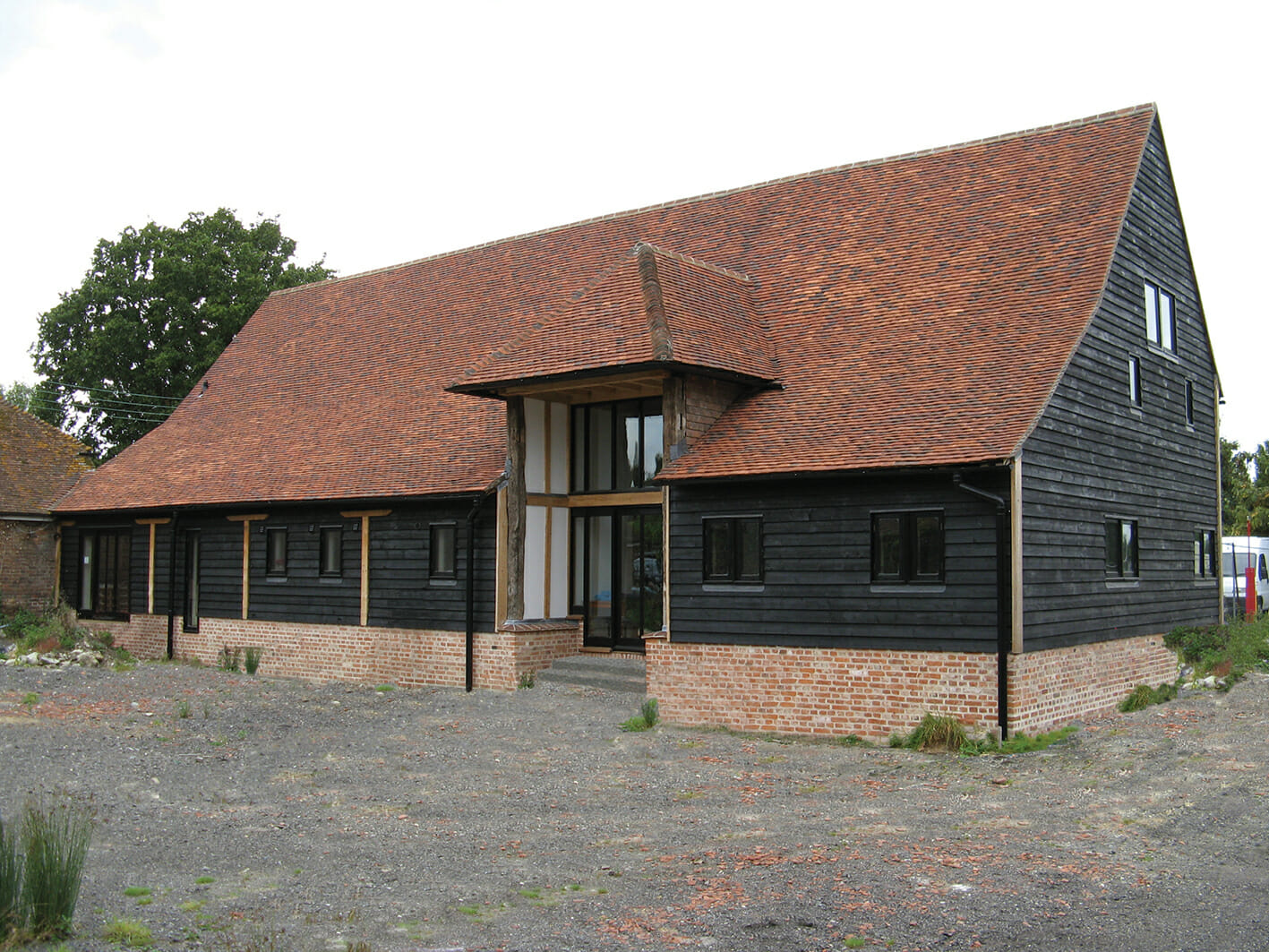
Tomasz Solnica, Managing Director of Tudor Roof Tile Co Ltd.
Made from English clay, Kent Peg roof tiles hold a special place in the English architectural landscape – particularly in the South East of England, where they were used on most houses, churches, barns and farmhouses, on roofs and walls alike.
Dating back as far as the 12th and 13th centuries, the name ‘peg tile’, originally came from the softwood pegs, which were driven through two holes in the top edge of the tiles which allowed them to hang on laths or battens.
As the original peg and plain roof tiles were made by local or travelling craftsmen who relied on hand moulding and simple firing techniques, the tiles they produced had a wide variation of size, texture, camber and colour. This was despite the Royal Charter of 1477 which aimed to standardise the size of peg and plain tiles
Eventually, the widespread use of traditional peg tiles gradually declined with the introduction of handmade ‘plain tiles’ where the wooden pegs were replaced by clay nibs formed into the tile from which to hang the tiles. This reduced the cost and made the fixing of the tiles easier.
Cheaper mass-produced machine-made clay and concrete roof tiles then became available in the 1900s, and although these lacked the aesthetic irregularity of the handmade tiles, their again cheaper cost led to their popularity.
However, in recent years, tighter planning regulations and recognition of the need to conserve our historic buildings with locally obtained sustainable and more visually sympathetic materials has resulted in a renewed interest.



Reclaimed or New?
Old peg tiled roofs are constantly falling into disrepair, largely through damaged pegs, insect or fungal attack, wind-lift and the effects of frost, particularly on north-facing slopes.
Second hand tiles from specialist suppliers have traditionally been the preferred choice on historic buildings, particularly if only a few tiles are needed. They blend in extremely well, provided they are of a compatible size, texture and colour and reclaimed from the same locality.
However, good reclaimed roof tiles from legitimate sources are increasingly rare, and expensive, and after many years of wear and tear, their condition and life expectancy is inevitably uncertain and they do not hold performance guarantees!
In cases where large sections or entire roofs need to be replaced, new handmade peg tiles, such as those made by Tudor Roof Tile Co Ltd, are often a much more reliable and a cost-effective option.
One of the problems architects, conservationists and owners of heritage homes face is that the sought after ‘rustic’ character of the original Kent Peg Tile, with its subtle variation in texture, colour and camber is difficult to replicate using modern manufacturing methods.
Despite significant advances, the majority of mass-produced ‘machine made’ clay roof tiles are still far too dull and uniform in appearance to be a convincing substitute.
A very small number of ‘studio potters’ do still make bespoke handmade roof tiles, relying on skilled craftsmen to not only painstakingly form each individual tile, but to also recreate bespoke colourings. Such meticulous detailing is often reflected in their production costs.
Tudor Roof Tile is one of the few remaining English manufacturers, who combine the best of both traditional and modern tile making techniques to create a time weathered ‘olde world’ rustic look.
Handmade with meticulous attention to detail, each clay peg and plain tile is individually hand pressed, moulded and trimmed using some of the techniques that have hardly changed over the years. The tiles are then strengthened using advanced firing techniques in order to give the final product exceptional performance and durability.
Mindful of the varying requirements of each project, Tudor can make tiles with bespoke sizes and shapes, so that they are suitable for both ancient and modern buildings as required.
Historical Authenticity
When restoring a historic roof, particularly when it is grade listed, it is important to respect the original character and detailing.
For instance, the smallest change from the original peg tile size can damage the overall aesthetic. This is why Tudor offers a range of non-standard bespoke sizes in a variety of soft muted tones that age and blend well with the faded roofs of older buildings.
Made with either square or round peg holes, they are suitable for use with traditional wooden and modern aluminium pegs.

Modern Architectural Design
Whilst remaining true to its roots and original character, the Kent Peg Tile is continuing to evolve and develop to meet the changing needs of today’s market.
Increasingly, new property owners are asking their architects for a ‘wow’ factor external appearance. Here again the bespoke handmade peg tile proves to meet all requirements for aesthetics and performance at a realistic cost.
Available in a wide range of size, with single or double camber, a wide range of colour options, and matching ornamental tiles, they are adding value, character and individuality to modern properties.
For those architects and conservationists wanting to create a roof that is very much rooted in our architectural heritage, the Kent Peg Tile is a very attractive option.
Tudor roof tiles are available from leading roofing and builders merchants.
For more information, contact:
Tudor Roof Tile Co. Ltd, Dengemarsh Road, Lydd, Kent, TN29 9JH.
Tel: 01797 320202
E-mail: info@tudorrooftiles.co.uk Website: www.tudorrooftiles.co.uk
